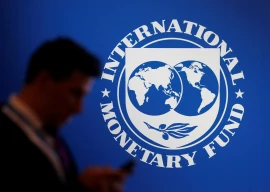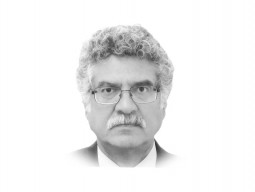
Dear AR Chughtai Sb,
Today, I was caught up in a situation where I ended up fighting your case in front of a ‘self-declared’ art critic of Pakistan. I am using this harsh expression enjoying the friendship licence for a dear friend who has been my ally in exploring art around us to better understand the socio-political realities of our times. The dispute started when my friend easily bought the allegation purported by the Western-aligned popular art history narratives. He voluntarily admitted that South Asian artists in general and Pakistani artists in particular have not been well-versed in the philosophy of art and aesthetic theories. I had a brief introduction to the collection of your writings — Maqalat-e Chughtai. These essays persuasively articulate your understanding of art and aesthetics. Your discourse also contextualises the creative practices of Colonial India. Since I too have not fully decoded your creative genius, I should consult you to prepare my arguments for the case that I would like to call Muqadima-e Chughtai.
In the 19th century, TB Macauly, Governor General’s Council for India, exhibited his lack of understanding of the Indian education system, its pedagogy and practice. He declared that “India had nothing to teach its own subjects” and boasted that “a single shelf of a good European library was worth the whole native literature of India and Arabia…the [Indian] dialects contain neither literary nor scientific information”. A few years later, in 1910, George Birdwood, an Anglo-Indian official, shared a similar mindset and announced that painting and sculpture as ‘fine arts’ did not exist in India. I am not sure if our ‘learned masters’ issued disclaimers after the discovery of Harappa and Moenjo Daro a decade later, in the 1920s. Two of the main cities of the Indus Valley Civilization were excavated under the supervision of Sir John Marshall, Director General of the Archeological Survey of India. But then, the Britishers already, though accidently, had discovered the Ajanta caves, in Maharashtra, during a tiger hunt as early as 1819. In 1844, Major Robert Gill was commissioned by the Royal Asiatic Society to create reproductions of the wall paintings at Ajanta caves. Between images of the Buddha, representations of glamorous princes and princesses, animals, palaces, silks, jewelry, lovemaking, hence, life in all its mortal richness were reported. These images amaze aesthetic sensibilities and testify what these Indian artists saw was a joyous vision of natural fecundity and divine beauty.
My purpose in stating these facts is to rest the case of misjudgment and prejudice of British officials that serve as the primary sources for most of the scholarship on Modern India. Inspired by such misconceptions, a couple of years ago, our social media ‘scholars’ ridiculed that when the Britishers were building Oxford and Cambridge universities, our rulers were building the Taj Mahal. It is not true that Oxford University and the Taj Mahal were constructed in the same milieu. Also, the backdrop of the two projects extrapolate that one society was initiating the journey towards research and scholarship by setting up the institutions and the latter was benefitting from the fruits of knowledge produced and disseminated in similar institutions that had been in place since ancient times. I am referring to Taxila and Nalanda University. Taxila was a higher education institute, a university as distinguished from school which exercised a kind of intellectual suzerainty over the wide world of letters in India. Nalanda University followed the modern residential model in ancient times. These universities taught different theoretical disciplines such as linguistics, law, astronomy, mathematics, medicine, arts and reasoning along with the Vedic and Buddhist religious texts. Besides, India was introduced to the Persian legacy of learning and wisdom centuries before the time under discussion. Taj Mahal and other artistic endeavours of pre-modern India are examples of aesthetic investigations and practical application of theoretical knowledge accumulated over the centuries in the region.
Allow me to delve into your essays from Maqalat-e Chughtai for further arguments. Shall write to you again.
Bano
2024
Published in The Express Tribune, April 19th, 2024.
Like Opinion & Editorial on Facebook, follow @ETOpEd on Twitter to receive all updates on all our daily pieces.





































COMMENTS
Comments are moderated and generally will be posted if they are on-topic and not abusive.
For more information, please see our Comments FAQ